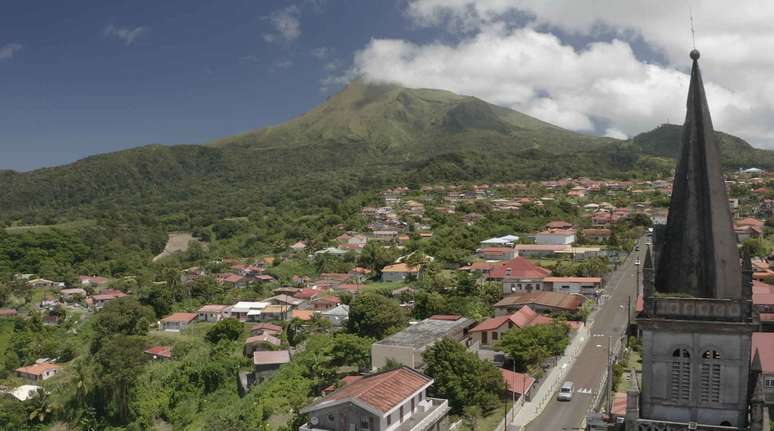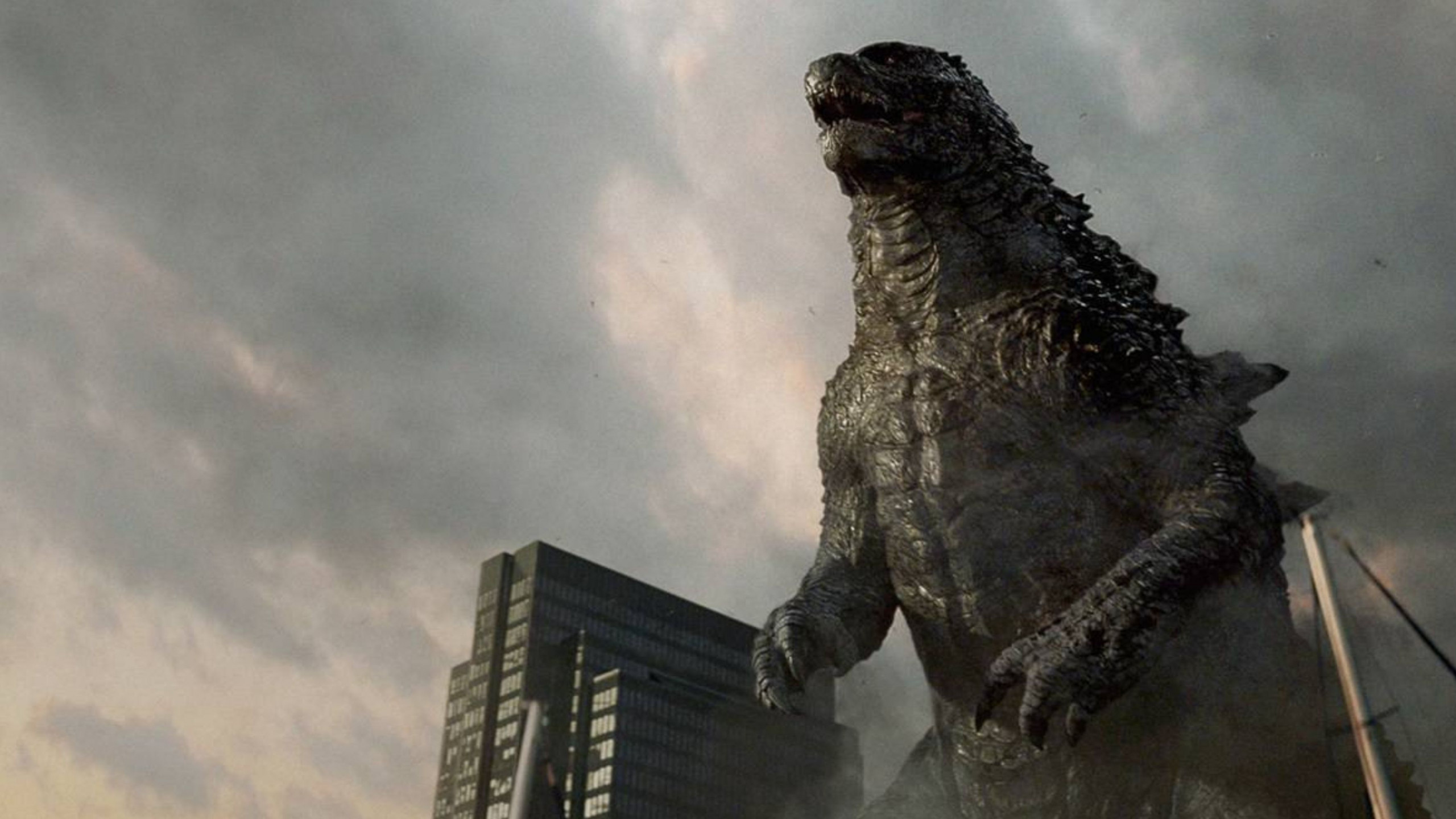It is one of the highest points in the Caribbean […]
In Martinique, Brazilians don’t even need to make an effort to feel at home, in the middle of the Caribbean.
Between Saint Lucia and Dominica, the island has fine sandy beaches, high-visibility seawater and trails that pass through dense forests. Not to mention the rice and beans, the pé de moleque (“pay nougat”, in French), the local capoeira (“danmyé” or “ladja”) and the accents brought from Africa.
This French overseas destination is right up there (even with flights departing from Brazil), but it will be unlike anything you’ve ever heard of the Caribbean lands. After all, this is not possible on any island in the region climb into the caldera of an active volcano.
Brazilian Luísa Zanini Vargas, a gaucho from Pelotas who has lived in Martinique for just over four years, is one of those who has already taken up the challenge. One, no. 3 times.
“It’s looking for a different energy and landscape that we’re not used to because we don’t have it [vulcão] in Brazil. I really like discovering new ways to immerse myself in that place,” Luísa describes in a statement to Travel by fare.
The track
At 1,397 meters above sea level, the highest point in Martinique and one of the highest in the Caribbean, Mount Pelée is an active volcano in the Martinique Regional Natural Park which, since last year, has been a UNESCO World Heritage Site.
Wherever you are, this mountain in the north of the island will always find a way to show off its grandeur, even if its summit is (almost always) cloudy.
But to see this volcano’s caldera up close, you’ll have to sweat.
“It is and it isn’t [uma trilha] for anyone. The first time I set out without any preparation for a hike of this magnitude and spent several days with body pain. But the impossibility is always in the mind,” warns Luísa, who already has more than 35 different trails on the island on her adventurous resume.

As it could not be otherwise, in the wild lands of northern Martinique, the path, although signposted, is full of uneven terrain and presents slippery terrain with rocks to literally climb (but don’t worry, it is not necessary to be a professional, at least use special equipment).
And, with each completed stage of that challenging up and down, a new world opens up beneath your feet, in a sequence of microclimates that develop in that hardened ash terrain.
All roads lead to the volcano
There are currently three official trails that lead to the Mount Pelée caldera and, although a guide is not mandatory, it is highly advisable to hire this type of service.
The most popular of these is Aileron, a 7.5 kilometer long walk that usually takes around 5 and a half hours (round trip) to the rim of the caldera. Of lesser difficulty, the path begins with a steep climb, from the car park, and passes through two refuges and the Le Chinois peak.
The Grande Savane starts in Le Prêcheur, on the Caribbean side of the island, and lasts about 4 hours, not counting the length to the caldera (1 hour more walking).
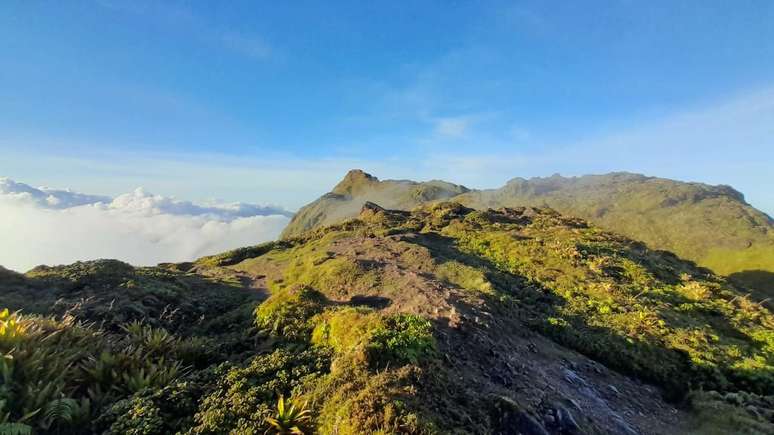
“This is the simplest because we start the path at the top and we don’t get tired in this first stage [da subida]”, evaluates Luísa who, one of the three times she has been to the volcano, was to see the sunrise, an experience that requires starting walking at three in the morning.
“It’s very isolated there and the sky is the most beautiful thing to see,” assures Luísa, for whom the highlight is the experience of seeing “a solar flare on the horizon, above the clouds.”
The more adventurous have a third itinerary available, which begins in the municipality of Grand’Rivière. The final destination is the same, with the difference that it is 17 kilometers on foot to the second refuge, a challenging path that usually takes about 8 hours, round trip.
There is so much desire to walk in Martinique that, every year, between June and July, the island hosts the Festival International de Randonnée, a program of guided trails of easy to moderate difficulty, along coastal routes or through forests.
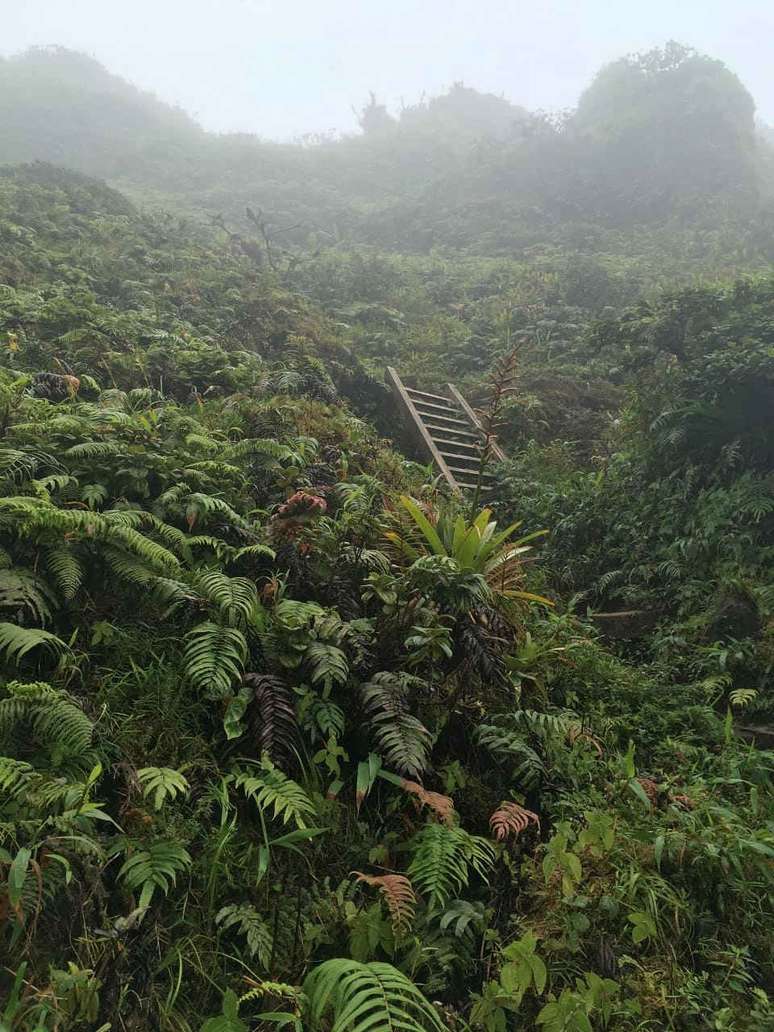
When we go
The steep path passes through cliffs (“any misstep can be dangerous”), is crossed by small wooden stairs and is not recommended at any time of the year.
To avoid the rainy season, from November to early February, and the cyclones, between June and November, it is best to leave during the dry season, which is generally between mid-February and early June.
There is sun and rain, heat and cold, clear or cloudy skies. All this on the same track. But once you pass through those dense interior forests, your idea of volcanoes will never be the same.
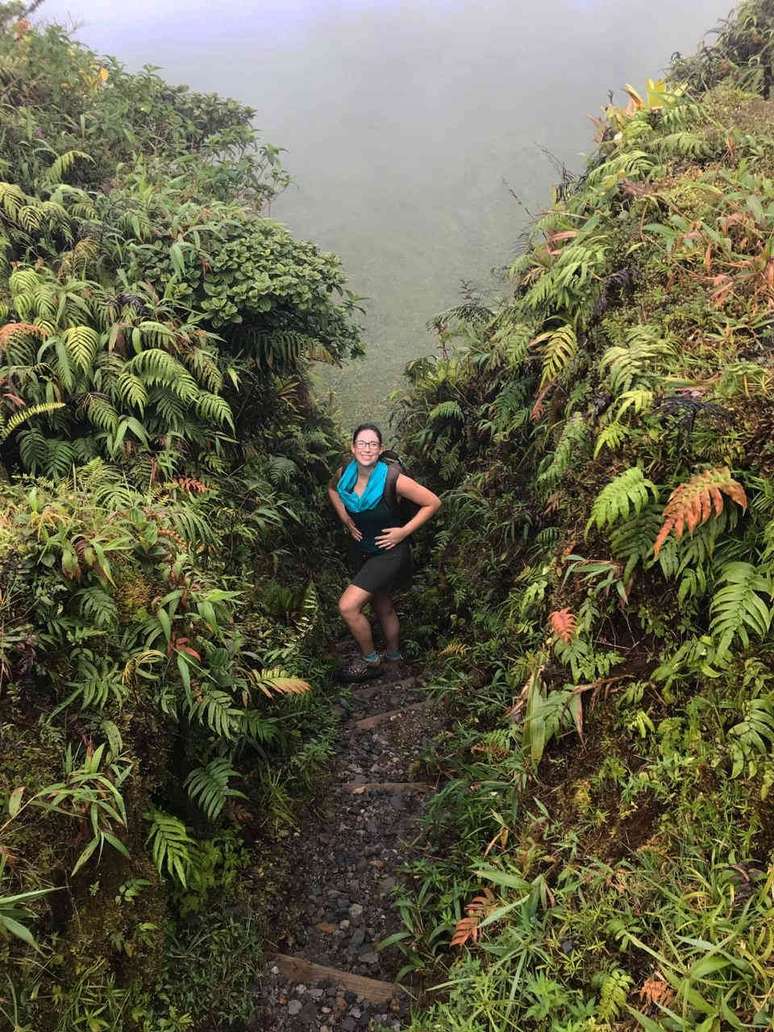
Don’t forget to be well prepared though, with non-slip trainers, head protection such as a hat or cap, trekking poles and layered waterproof clothing that can be removed depending on temperature changes.
Luísa also recommends at least two liters of water per person and trail snacks, such as dried fruit, granola bars, sandwiches and fruit.
For the rest you can leave Mount Pelée to take care of it.
Deadly volcano
Martinique is one of the peaks of a vast area with 18 volcanoes, in the Lesser Antilles, in the Caribbean. The island is beautiful, but there is almost no one left to talk about it.
One morning in 1902, the active volcano Mount Pelée erupted and, within minutes, killed approximately 30,000 people in the municipality of Saint-Pierre, petrifying everything that remained beneath the layers of ash.
According to reports, the eruption clouds were moving at a speed of almost 700 km/h and the internal temperature was over 1,000 °C.
However, weeks earlier, the volcano was already showing signs of what lay ahead.
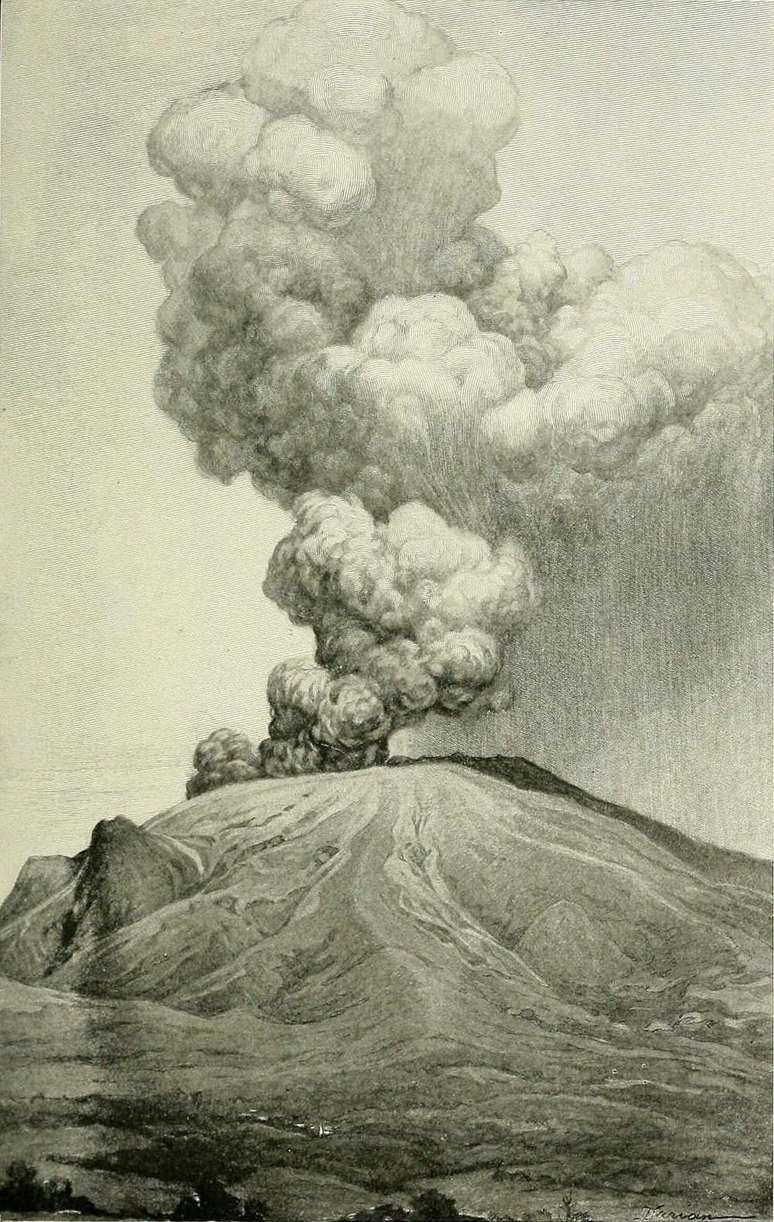
At the end of April, dark steam columns began to form, followed by ash rain in Prêcheur and light earthquakes. The following days were also marked by tsunamis, rising waters in the Pères and Roxelane rivers and torrential rains.
At the time, Saint-Pierre was not only the capital of Martinique, but also the main commercial and cultural destination of the island, a sort of “Caribbean Paris”. Since the deadly eruption of May 8, 1902, Fort-de-France will become the capital of the destination.
“From that day, Saint-Pierre disappeared with this Pelean-type eruption,” describes Jacqueline Marie-Rose, of the Martinique Tourist Board, the body responsible for promoting tourism in Martinique.
This eruption, whose name is inspired by Mount Pelee, is known for the large number of explosions of fragments, such as hot rocks, ash and dust, thus forming what is now known as the “fiery cloud”.
“This allows us to understand that this was not the case [uma erupção] of lava, but of gas”, adds Jacqueline.
I WAIT VIDEO
One of the most famous cases of survival in the 1902 catastrophe is that of Cyparis, probably one of only three who managed to escape the fury of the volcano alive.
The miracle occurred because this prisoner was found alive, three days after the eruption, protected by the thick walls of his cell. Despite severe burns, Cyparis was performed at Barnum, the largest circus in the United States, as “The Man Who Survived the Last Judgment.”
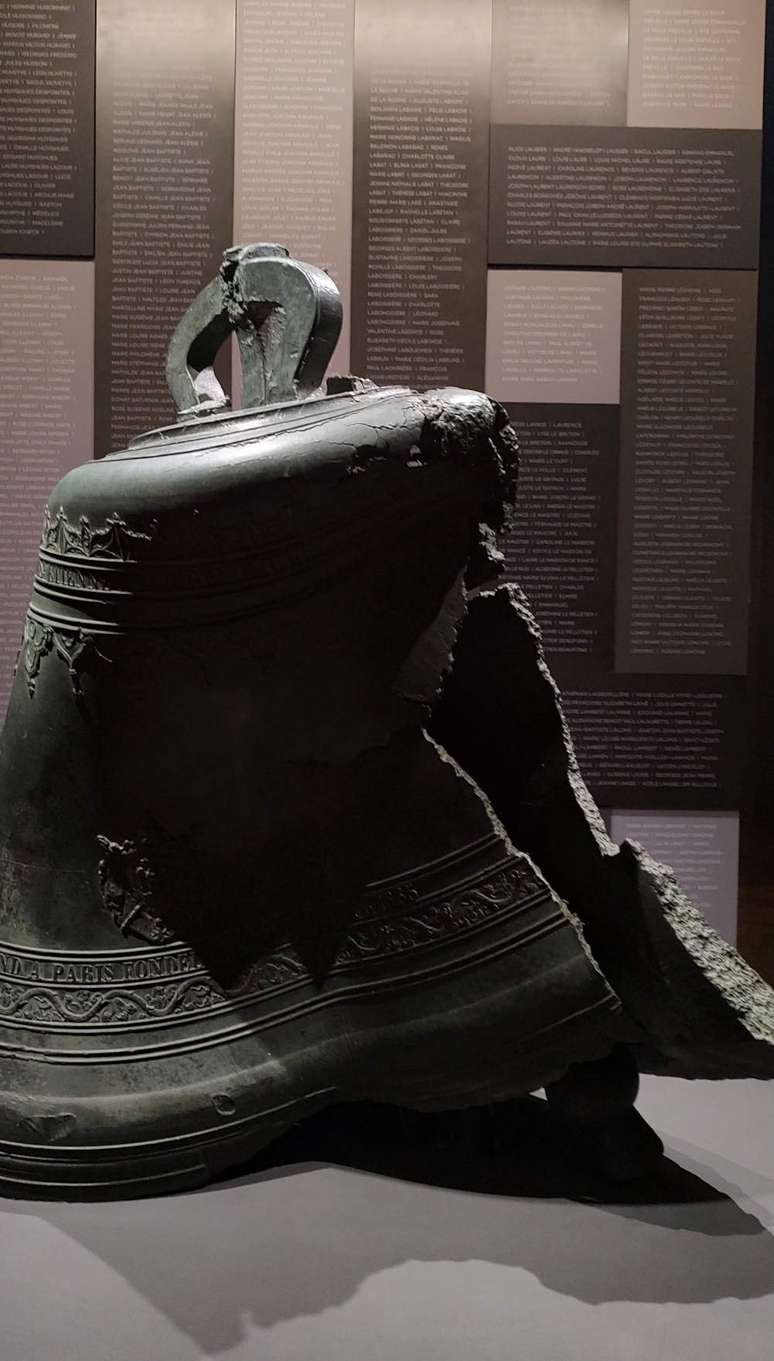
To learn more about these stories, the advice is small and scenic Memorial to the 1902 catastrophea space created by the American volcanologist Frank A. Perret, in 1933, to remember one of the worst volcanic disasters of the last century.
The rooms of this museum, in Saint-Pierre, display more than 430 pieces from the catastrophe, such as the imposing bronze bell, from 1865, deformed by the heat of the eruption, and the mass of objects such as vases and pots, in amidst the volcanic lava.
By the way, you can rest assured that Pelée’s last eruption occurred between 1929 and 1932, and currently, volcanic activities on the mountain are frequently monitored.
LEARN MORE
Memorial to the 1902 catastrophe
Every day, from 9:00 to 18:00
Rue Victor-Hugo, 169 (Saint-Pierre, Martinique)
Tickets: €8 (adults); €6 (children aged 7 to 17); and free (under 7 years)
How to get to Martinique
Since May last year, Air France has operated the route between Belém, in Pará, and Cayenne, the capital of French Guiana. From there, the same plane heads to Fort-de-France, the gateway to Martinique in the French Caribbean.
Flight AF603 (duration 1h25) departs from Belém, on Saturday, at 9.50am, and arrives in Cayenne, French Guiana, at 11.45am. After disembarking for immigration procedures in French Guiana (or in Martinique, on the return route to Brazil), the passenger continues at 12.35 pm to Fort-de-France, Martinique, on the same plane, on AF601, the whose journey lasts another 2h10.
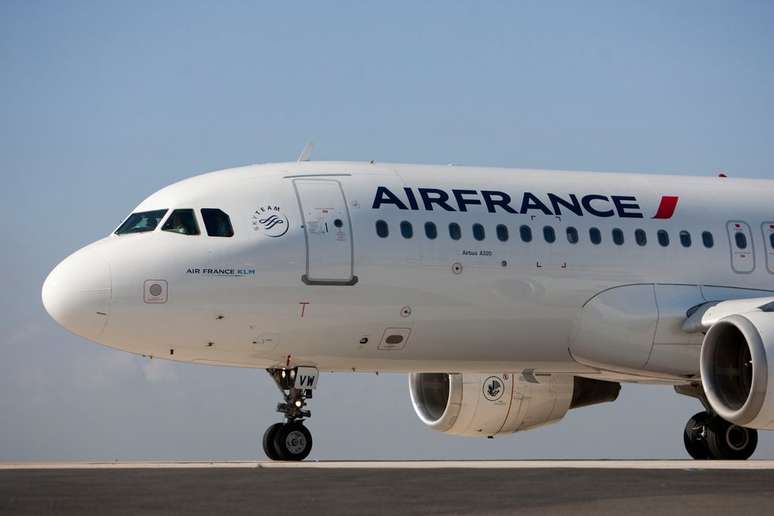
On the way back, flight AF600 takes off from the capital of Martinique at 12.35pm on Friday and is scheduled to land in French Guiana at 3.45pm. The last leg of the journey is on AF602, the same day, at 5.15pm, and landing in Belém, at 6.50pm.
Both routes are operated with the Airbus A320, with 170 seats and Wi-Fi on board.
* Journalist Eduardo Vessoni traveled with the support of Martiniquais du Tourism Committee, Air France AND Throughout France
Source: Terra
Ben Stock is a lifestyle journalist and author at Gossipify. He writes about topics such as health, wellness, travel, food and home decor. He provides practical advice and inspiration to improve well-being, keeps readers up to date with latest lifestyle news and trends, known for his engaging writing style, in-depth analysis and unique perspectives.

